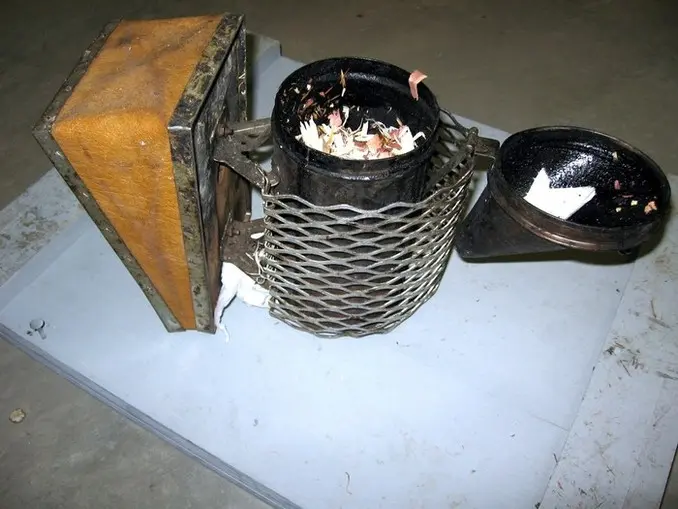Year 4 March - Yeow! 🖊️

Beeyard Blues
Well, through a couple of mud holes, around a snowdrift or two, and there it is—the beeyard. Surprisingly, it’s intact. No wind or varmint damage.
My son Isaac, who’s been around bees his whole life, decided to tag along. It’s not a frequent occurrence for him. Maybe he figured the old man needed a hand digging out or might have a heart attack or something. But hey, I welcomed the company.
Standing inside the beeyard, he remarks, “It’s deathly quiet.” After a decade away from the bees, he instantly sensed something was amiss.
And he was spot on. No human chatter. No rustle of the wind. No buzzing of bees. No bees in sight, flying or otherwise. No dead bees scattered around. Just eerie silence.
I scanned the hives, starting from last season’s weakest to the two best ones. Not one hive was alive—zero out of ten. My jaw probably hung open for a while. I gave some boxes a good thump. Breathed between a few frames. Listened intently. Nothing.

-No need for matches today!
It’s time to roll up our sleeves.
The Dreaded Task
So, it was time for the worst bee job in the world. I loathe it. As a commercial beekeeper, I’ve done it a thousand times. The dreadful task? Cleaning out the dead hives.
A dead hive is usually a soggy, stinky mess. Bees handle and need moisture during the dry winter months, conserving it within the cluster. However, when they perish, that moisture is unleashed. Combine it with the bees’ biomass and the sweetness of the hive, and you’ve got a rotten, moldy, fermenting, stinky disaster.
Scraping this mess off the combs and bottom boards turns a messy situation into a messier one. With more than a few deceased hives, a beekeeper ends up wearing the stuff. It seeps through clothing and squirts through the veil.
That dead biomass is like a large cat or small dog that has disintegrated between the combs. And the smell? Not much better. Trust me; you never forget it.
Some beekeepers, faced with this mess, assume that moisture killed the bees. But from my experience, the soggy part is the result of the colony’s demise, not the cause.
The Discoveries
So, I began dismantling the hives—one after another—until they were all laid bare. But not a single hive had the usual heaps of wet, deceased bees. Here’s what I found:
- No dead bees on the bottom boards or in front of the hives.
- No dead brood.
- No visible mites on the bottom board debris.
- No mite fecal deposits on the combs.
- No moisture or mold anywhere in the hive.
- Honey, pollen, and sugar feed were abundant and untouched.
- No open nectar or diluted honey.
- Only a few small clusters of dead bees on the comb.
- These dead clusters were mostly composed of callow to young bees.
- The fall cluster size had no effect on the appearance or outcome.
The lack of dead bees was startling. Occasionally, I found two to three-inch diameter clusters of deceased bees. Sometimes, these mini clusters spanned several adjacent frames. More often, several separate mini clusters were scattered.
In several hives, I discovered a marked queen in a cluster, but the queens were absent in the rest. Out of ten hives, about five cups of bees were scraped out, with roughly the same amount remaining stuck in the comb. That’s about one cup of bees per hive—virtually no dead bees at all.
The feed situation mirrored how I left it last fall. All open nectar/diluted honey seen at the last fall visit was gone, but the rest of the feed hadn’t been touched.
Analysis
These hives perished shortly after that last fall visit. Here’s the rundown:
- Bees vacated these hives without leaving dead bees inside or out.
- Hives became disorganized and dysfunctional, unable to cluster, rear brood, or access capped honey.
- Small amounts of October brood hatched but perished when open nectar/diluted honey ran out.
Déjà Vu of the Past
Back in the ’70s, my commercial bees suffered from traditional CCD or disappearing disease. Robust hives, bursting with brood, a prolific queen, and amid a fantastic flow, would suddenly lose all their bees, leaving behind unhatched brood, feed, and sometimes a queen.
I had a booming 40-colony yard that consisted of four-story deep hives filled with brood, new honey, and bees. Three days prior, I’d worked them and took a fellow beekeeper out to show him what a booming yard looked like.
Upon opening the gate, I was met with silence. Only a few cups of freshly hatched bees and the occasional queen were found. No dead bees were in the hives or on the ground.
I lost about 400 hives per week this way until the disease mysteriously vanished, just as it had appeared.
Today’s Virus Onslaught
This new malady echoes that old disappearing disease. Three years ago, when I collected these bees from a commercial beekeeper’s yard, they were grappling with the same issue Randy Oliver described. I didn’t recognize it then, and it took me over two years to figure it out.
Randy’s bees were battling a virus overload. It can take months or years for a colony to succumb, but the final stages mimic the old CCD.
He’s managed to reproduce the condition by feeding healthy colonies infected bee pulp.
The Hopes and Dilemmas
In nature, a colony’s death is part of a natural process. Infected nests get scavenged, and eventually, less susceptible bees return, and life goes on. But when a beekeeper clings to equipment filled with bees, it’s not that simple.
So, what’s next?
I’m torn. Ordering packages and starting afresh would be the easy, albeit costly, route. Perhaps snagging some well-virus-exposed yet thriving California bees is the best bet. Isolated feral bees and mating might have a few undisclosed drawbacks.
However:
- Will new infected comb and equipment lead to dead bees three years from now?
- Are package bees available this late in the season?
- Should bees be kept in areas where they don’t naturally thrive?
- Can I escape the pesticide problem?
- I’ve been a bee enthusiast for 60 years; maybe it’s time to explore something new.
- My partner insists I’ll never change; is she right?
Only time will reveal the answers. ✨
-Cheers, D 🍂🐝
